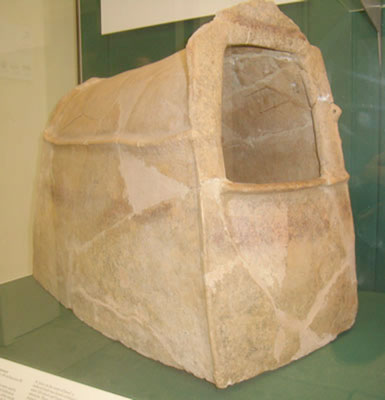Tell Abu Habil: Tracing human migration patterns in Jordan Valley
AMMAN — Both banks of the Jordan Valley were occupied from Prehistory to modern times, as populations were moving from east to west and vice-versa.
Tell Abu Habil is located south of the Wadi Rayyan, and was explored by Nelson Glueck, an American archaeologist, and later by British and French scholars James Mellaart and Henri de Contenson in 1953. The studying continued in 1975 by Muawiyah Ibrahim, a Jordanian archaeologist and professor emeritus from Yarmouk University.
At Tell Abu Habil, the team found Neolithic and Chalcolithic pottery and flint tools and these sites can be categorised to belong to Ghassulian culture, which was a Middle Chalcolithic stage in southern Levant (4,400BC to 3,500BC).
“During the 1953 survey conducted by Mellaart and Contenson in the Yarmuk and the Jordan valleys, four sites in the Tell es-Saidiyyeh vicinity were identified and named as: Tell es-Saidiyyehesh Sharqi, Tell es-Saidiyyeh Gharbi, Tell es-Saidiyyehesh Shemali and Tell es-Saidiyyeh Tahta. The last site is situated to the west of Tell es-Saidiyyeh Gharbi on a terrace among the ‘qattarhills’ overlooking the Jordan River,” the scholar Zeidan Kafafi explained, adding that the site has been assigned to the Late Chalcolithic and described as a Ghassulian site.
Glueck also researched and visited Tell es-Sa‘idiyyeh Tahta and collected pottery sherds with herringbone incisions.
This area of the Jordan Valley continued to attract archaeological teams and their results suggested three different sub-phases to the Chalcolithic: Early, Middle and Late.
“The phases are correlated with a number of sites and different fabrics. The Early Chalcolithic includes Jericho and Wadi Rabah; the Middle Chalcolithic comprises Tell Beth Shan, Tell Tsaf, the lower levels at Teleilat Ghassul and the Qatifian Culture and the Late Chalcolithic contains the upper level at Ghassul, the Beersheba sites, ossuary burial caves in the coastal plain, the Golan
Heights and the Hula Valley cultures,” Kafafi underlined.
An American archaeologist Eliot Braun does not consider ware from Beth Shan as a truly ware and to be used as an indicator for the Middle Chalcolithic period. On the contrary, Braun declared that the term Middle Chalcolithic used by Garfinkel is not acceptable.
“To define, the Beth Shan pottery assemblage was encountered in the basal levels of the tell and the pits excavated under it. This pottery assemblage has been studied by Y. Garfinkel and he described it as all handmade, with a finish of poor quality compared to the Wadi Rabah pottery and decorated with applied and red/brownish paintings. In fact, it is clear that Beth Shan includes a mixture of wares,” Kafafi explained, adding that his remark invites us to raise the question: Is the Beth Shan pottery assemblage, as identified by Garfinkel, identical with the Ghrubba clay vessels industry?
The published pottery vessels from the three sites under discussion are dated from the Middle Chalcolithic by Y. Garfinkel; However, it should be mentioned that these sites are located in the middle and northern parts of the Jordan Valley, Kafafi, continued, adding that in this area, the Tell Abu Hamid site is the only site to produce a stratigraphical sequence from the late 6th millennium to the middle 4th millennium BC.
“It is very much obvious that Abu Hamid produced three different pottery assemblages, the earliest named as post-Yarmukian [lower levels], Wadi Rabah [middle levels] and the Ghassulian [upper levels]. Based on a parallel morphological study we think that the majority of the published pottery sherds from Tell esh-Shuneh North, Abu Habil and Tell es-Sa‘idiyyeh Tahta are closer in date to the excavated pottery assemblage from Abu Hamid upper levels rather than to the ones of the middle or the lower levels. Using the terms Early, Middle and Late for the Chalcolithic period seems misleading and more stratified pottery assemblages are still necessary to reach a sub-division of the Chalcolithic period,” Kafafi underscored.
“I would argue that the archaeological remains attributed to those pottery assemblages reflect in several ways a development from the preceding Pottery Neolithic assemblages. This might enforce our claim that scholars cannot decide on a sharp line which separates between the Late Neolithic and the beginning of the Chalcolithic. Several sites [such as Pella, Abu Hamid and Ghassul] showed a continuation and succession of occupation from the Late Pottery Neolithic through the Chalcolithic,” Kafafi said.

